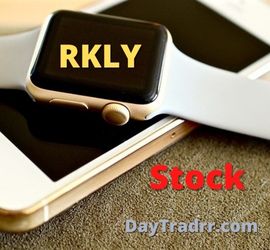What Is a Calendar Spread?
 A calendar spread is an options or futures trading strategy. It is established by simultaneously entering a long and short position on the same underlying asset but with different delivery dates. In a typical calendar spread, a trader buys a longer-term contract and goes short on a nearer-term option with the same strike price. If two different strike prices are used for each month, it is known as a diagonal spread. Calendar spreads are sometimes referred to as inter-delivery, intra-market, time spread, or horizontal spreads.
A calendar spread is an options or futures trading strategy. It is established by simultaneously entering a long and short position on the same underlying asset but with different delivery dates. In a typical calendar spread, a trader buys a longer-term contract and goes short on a nearer-term option with the same strike price. If two different strike prices are used for each month, it is known as a diagonal spread. Calendar spreads are sometimes referred to as inter-delivery, intra-market, time spread, or horizontal spreads.
Calendar spreads allow traders to construct a trade that minimizes the effects of time. A calendar spread is most profitable when the underlying asset does not make any significant moves in either direction until after the near-month option expires. (Source: investopedi.com)
Calendar Spread Options Trading
The typical calendar spread trade involves the sale of an option (either a call or put) with a near-term expiration date. The same trader will simultaneously purchase an option (call or put) with a longer-term expiration. Both options are of the same type and typically use the same strike price.
- Sell near-term put/call
- Buy longer-term put/call
- Low volatility – The expectation is that implied volatility is low.
A reverse calendar spread takes the opposite position. It involves buying a short-term option and selling a longer-term option on the same underlying security. (Source: ibid)
Using a Calendar Spread
The purpose of the trade is to profit from the passage of time or an increase in implied volatility. Since the goal is to profit from time and volatility, the strike price should be as near as possible to the underlying asset’s price. The trade takes advantage of how near vs long-dated options act when time and volatility change.
- Implied volatility – All other factors being the same, an increase in implied volatility would have a positive impact on this strategy. This is because longer-term options are more sensitive to changes in volatility (higher vega). The caveat is that the two options can and probably will trade at different implied volatilities.
- Passage of time – All other things held the same, the passage of time would have a positive impact on this strategy at the beginning of the trade until the short-term option expires. After that, the strategy is only a long call whose value erodes as time elapses. In general, an option’s rate of time decay (theta) increases as its expiration draws nearer.
Maximum Loss on a Calendar Spread
The maximum loss is limited to the amount paid for the strategy. The option sold is closer to expiration and therefore has a lower price than the option bought. This results in the net debit or cost. The ideal market move for profit would be a steady to slightly declining underlying asset price during the life of the near-term option. Ideally, this should be followed by a strong move higher during the life of the far-term option. A sharp move upward in implied volatility would increase the profitability of the second option.
- Near-term option – The maximum gain would occur when the underlying asset is at or slightly below the strike price of the expiring option. If the asset were higher, the expiring option would have intrinsic value.
- Far-term option – Once the near-term option expires worthless, the trader is left with a simple long call position. This has no upper limit on its potential profit. Basically, a trader with a bullish longer-term outlook can reduce the cost of purchasing a longer-term call option.
The Long Calendar Spread
Recall that a calendar spread is an options strategy. It is constructed by simultaneously buying and selling an option of the same type (calls or puts) and strike price, but different expirations.
- Long calendar spread – If the trader sells a near-term option and buys a longer-term option, the position is a long calendar spread.
- Short calendar spread – If the trader buys a near-term option and sells a longer-term option, the position is a short calendar spread.
Long Call Calendar Spread Example
Assume that Exxon Mobile (XOM) stock is trading at $89.05 in mid-January, you can enter into the following calendar spread:
- Sell the February 89 call for $0.97 ($97 for one contract)
- Buy the March 89 call for $2.22 ($222 for one contract)
The net cost (debit) of the spread is thus (2.22 – 0.97) $1.25 (or $125 for one spread). This calendar spread will pay off the most if XOM shares remain relatively flat until the February options expire, allowing the trader to collect the premium for the option that was sold. Then, if the stock moves upward between then and March expiry, the second leg will profit. The ideal market move for profit would be for the price to become more volatile in the near term, but to generally rise, closing just below 95 as of the February expiration. This allows the February option contract to expire worthlessly and still allows the trader to profit from upward moves up until the March expiration.
Profit & Loss Analysis
Since this is a debit spread, the maximum loss is the amount paid for the strategy. The option sold is closer to expiration and therefore has a lower price than the option bought, yielding a net debit or cost. In this scenario, the trader is hoping to capture an increase of value associated with a rising price (up to but not beyond $95) between purchase and February expiration.
If the trader were to simply buy the March expiration, the cost would have been $222 dollars. But, by employing this spread, the cost required to make and hold this trade was only $125. This makes the trade one of greater margin and less risk. Depending on which strike price and contract type are chosen, the calendar spread strategy can be used to profit from a neutral, bullish, or bearish market trend. (Source: ibid)
How the Calendar Spread Makes Money
- Time decay – The first way the calendar spread makes money is through time decay. The idea is that the near-term option is losing value much faster than the back month option. The problem is that the underlying stock will not always act according to our plan. If the stock makes a significant move upward, the trade will start losing money. This is because if the stock moves up, both the near-term and far-term options will have very little value. As a result, the spread will shrink.
- Increased volatility – The second way a Calendar Trade makes money is with an increase in volatility in the far-term option or a decrease in the volatility in the short-term option. If there is a rise in volatility, the option will gain value and be worth more money.
Managing the position is the key. What happens when the stock makes a significant move and the trade starts losing money? Having an exit plan before entering the trade is extremely important.
Maximum Loss
Remember, a calendar spread is a debit spread. As such, the maximum that the trader can lose is the amount paid to enter the trade. The sold option is shorter-dated and therefore cheaper than the long-dated option that is being bought. This results in a net debit for the trader. A calendar spread has a similarly shaped payoff diagram to a short straddle but the maximum loss is limited whereas the maximum loss on the short straddle is theoretically unlimited. With a calendar spread, the underlying stock would need to make a pretty big move for the trade to suffer a full loss. (Source: optionstrading.com)
Maximum Gain
The maximum gain on a calendar spread can’t actually be worked out in advance. Simply put, it’s impossible to know what the back-month option will be trading for when the front-month option expires. This is due to changes in implied volatility. The ideal scenario is that the stock ends near the short strike price at the expiration of the near-term option.
Ideally, this would be associated with an increase in implied volatility in the back-month option. The increase in implied volatility in the back-month helps to offset any negative effects from time decay. Some traders like to hold the long call as a stand-alone trade after the short call expires. The expired short call helps offset the cost of the long call. Another idea is to make the trade a “campaign calendar”. This is where the bought option is 3-4 months out. As a result, the trader gets the chance to sell 2-3 at-the-money calls over the life of the trade. (Source: ibid)
Risks
It goes without saying that there is always a risk that the price of the underlying will rise or fall sharply. Thus, causing an unrealized loss, or a realized loss if we close the trade.
Assignment risk
There is also a risk of early assignment when having a short option position in an individual stock or ETF. You can mitigate this risk by trading Index options, but they are more expensive. Usually, an early assignment only occurs on call options when there is an upcoming dividend payment. Traders will exercise the call in order to take ownership of the share before the ex-date and receive the dividend. Short puts can also be assigned early. The important thing to be aware of is that early assignment generally happens when a short option is in-the-money.
While this doesn’t happen often it can theoretically happen at any point during the trade. The risk is most acute when a stock trades ex-dividend. If the stock is trading well below the sold call, the risk of assignment is very low. The risk is highest if the stock is trading ex-dividend and the short call is in the money. One way to avoid assignment risk is to trade stocks that don’t pay dividends or trade indexes that are European style and cannot be exercised early. However, this should not be the primary factor when determining which underlying instrument to trade. Otherwise, think about closing your calendar before the ex-dividend date if they are close to being in-the-money.
Expiration risk
As expiration approaches, if the stock is trading just above or just below the short call, the trader has expiration risk. The risk here is that the trader might get assigned. Then, the stock makes an adverse movement before he has had a chance to cover the assignment. In this case, the best way to avoid this risk is to simply close out the spread before expiry. While it might be tempting to hold the spread and hope that the stock drops and stays below the short call, the risks are high that things end badly. Sure, the trader might get lucky, but do you really want to expose your account to those risks?
Volatility risk
This is a positive vega strategy meaning the position benefits from a rise in implied volatility. If volatility falls after trade initiation, the position will likely suffer losses. The other risk with volatility relates to the volatility curve. Generally speaking, when volatility rises or falls it has a similar impact across all expiration periods. However, you could potentially run into a scenario where volatility in the front month rises (bad for the short call) and volatility in the back month drops (bad for the long call). That would result in a double whammy for the trade. That scenario may not be that common but it could happen. Therefore, it’s important that traders understand volatility term structure when placing trades that span different expiration periods. (Source: ibid)
Summary
When a trader buys a calendar spread, he sells a near-term option and buys a longer-term option of the same type and strike price. In general, traders are anticipating the stock price to trade near the strike price as time passes. If the stock price hovers around the long calendar’s strike price over time, the short option will decay faster than the long option, all else equal. Ultimately, it will lead to an increase in the calendar’s price and generate profits for the long calendar spread trader. However, the stock price can move significantly in either direction away from the calendar’s strike price. In that case, the worst loss that can occur is the price the trader paid for the calendar spread.
One reason to buy a calendar spread is because of its low-risk and profit potential from the passage of time. This may be due to known events, such as an economic report or an election. Any upcoming event that you feel will not move the market as much as anticipated. Traders can design a spread position that minimizes loss potential. At the same time, leaving open the possibility of tremendous profit. Another trader may sell the calendar spread if they feel the underlying will have dramatic moves in the near term and stabilize on a longer time horizon. Traders may have a complex view of future market activity and implied volatility. Calendar spreads are one tool for traders to express their views within a certain timeframe.
Up Next: Day Trading For Beginners – What Is A Day Trader
Day trading is simply buying a stock or security, then, quickly selling or closing out the position. Usually, the position is closed within a single trading day. Ideally, a day trader wants to “cash-out” by the end of each trading day. They want no open positions to avoid the risk of losses by holding security overnight. Day trading is not for everyone and carries significant risks. It requires an in-depth understanding of how the markets work and various strategies for profiting in the short term. Short-term profits require a very different approach compared to traditional long-term, buy and hold investment strategies.




